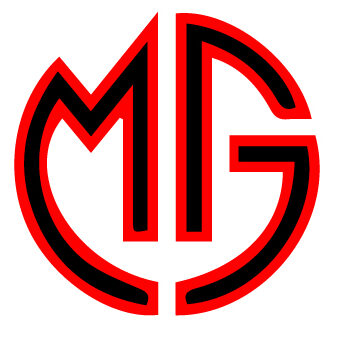When the ball ripples the back of the net for a home goal at any LaLiga stadium, the crowd goes wild with delight. And, as the fans around the ground start celebrating, there is often one supporter whose excitement stands out. That is the club mascot, which could be in the image of an animal, a tree, a yeti, a submarine or even a cucumber.
With each passing year, the fan experience at LaLiga stadiums is improving and the addition of more and more mascots is a major part of this. While there isn’t as much of a tradition of club mascots in Spain as there is in countries like the USA or UK, this is changing and more than half of the top Spanish clubs now have a mascot.
Here’s a look at some of the most curious mascot designs and interesting ways in which LaLiga clubs are using them to grow their brands, to improve the matchday experience and to interact with younger fans.
Groguet, the veteran mascot of Villarreal CF
One of the first Spanish clubs to understand the potential involved with creating a mascot was Villarreal CF. It was in 2001 that Groguet was born and this mascot was designed in the yellow and blue colours of the team and in the image of a submarine, one of the club’s nicknames.
As Juan Antón de Salas, director of the international department of Villarreal CF, explained: “The yellow submarine is a pop culture icon that the whole world recognises. The mascot brings this concept to life and can help us to become a preferred choice for non-Spanish football fans who are choosing their favourite LaLiga team. Groguet conveys club priorities such closeness with children and familiarity while creating a friendly atmosphere in the stadium. The mascot is special in the way that it brings people together. It’s like having another player on the team.”
Suru the elephant is the newest mascot in LaLiga
While Groguet is one of the veterans of the mascot scene in Spain, FC Cartagena’s Suru is the newest mascot in Spanish professional football, launched at the end of the 2022/23 season. This mascot pays tribute to the bravest of the elephants with whom the Carthaginian general Hannibal crossed the Alps some 2,200 years ago. That exemplifies the fascinating ways in which club mascots can help share and promote the history and culture of the different regions of Spain.
Explaining the decision to launch a mascot, the club stated: “The presence of our mascot is a plus when it comes to encouraging and creating atmosphere in the stadium on matchdays and we felt it was something that the fans had wanted for a while.”
Fans are involved in the design process, and they often pick an animal
The FC Cartagena mascot was actually designed by two local fans, and this is quite a common approach given that involving the fans makes sense for many reasons. As Málaga CF explained after the launch of Super Boke, a superhero anchovy: “We couldn’t have done it any other way. This has always been a very democratic club. This mascot belongs to the fans, and they’re the ones who created it.”
When the fans are involved in the design process, the most common selections are usually animals, whether mammals, birds, fish or reptiles. For example, Atlético de Madrid have Indi, a racoon; Valencia CF have Rat Penat, a bat; Deportivo Alavés have Zorro Babazorro, a fox; Elche CF have Datigol, also a fox; RCD Espanyol have Perico and Perica, two parakeets; and Levante UD have Blau and Grana, two frogs. In the majority of those cases, the animal selected has a clear connection to the city or the region, either historically or because it is a common species in that part of Spain.
Thinking outside the box
Some of the other mascot choices are a little more outside the box, with a good example of this being Burgos CF’s selection of Morciyeti, a design based on a Yeti. The club explained: “We had a penguin in mind. Since it’s black and white, it fitted perfectly with the idea and with our image, but we wanted to be a bit more original. In the end, a penguin would be the kind of thing everyone would expect, what anyone would have done.”
Another club that opted for a very unique design was CD Leganés, with Super Pepino, a cucumber that wears a superhero cape. Based on the club’s cucumber-related nickname, the character has become very popular and generated significant buzz on social media, especially after collaborating with other mascots. For example, Super Pepino was once visited by fellow pickle Mr. Dillon, the mascot of US college baseball team the Portland Pickles, while Super Pepino also took part in a joint promotion alongside Palmerín, the palm tree-inspired mascot of Real Betis.
As Víctor Marín, director of communication and marketing at CD Leganés, explained: “All of the content done with Super Pepino, such as the visit to Real Betis’ stadium or the meeting Mr. Dillon, has had a spectacular impact.”
The mascot duos of LaLiga
Another successful strategy has been to launch two mascots together. As mentioned above, both RCD Espanyol and Levante UD have mascot pairs, in Perico and Perica and in Blau and Grana.
CA Osasuna also have two mascots, although that wasn’t always the case. They first had Rojillo, a male mascot named after the club’s red colours. Then, at the beginning of the 2016/17 season, Rojillo stood blindfolded in the centre of the pitch at El Sadar before a match, when John Paul Young’s “Love is in the air” started playing. When the blindfold was taken off, Rojillo cast his giant mascot eyes on Rojilla. It was love at first sight and, all of a sudden, CA Osasuna had a mascot couple.
Besides all the mascots mentioned here, there are several others around Spain engaging in other examples of compelling storytelling and effective brand building. The squad of LaLiga mascots continues to grow, one animal or superhero at a time.


